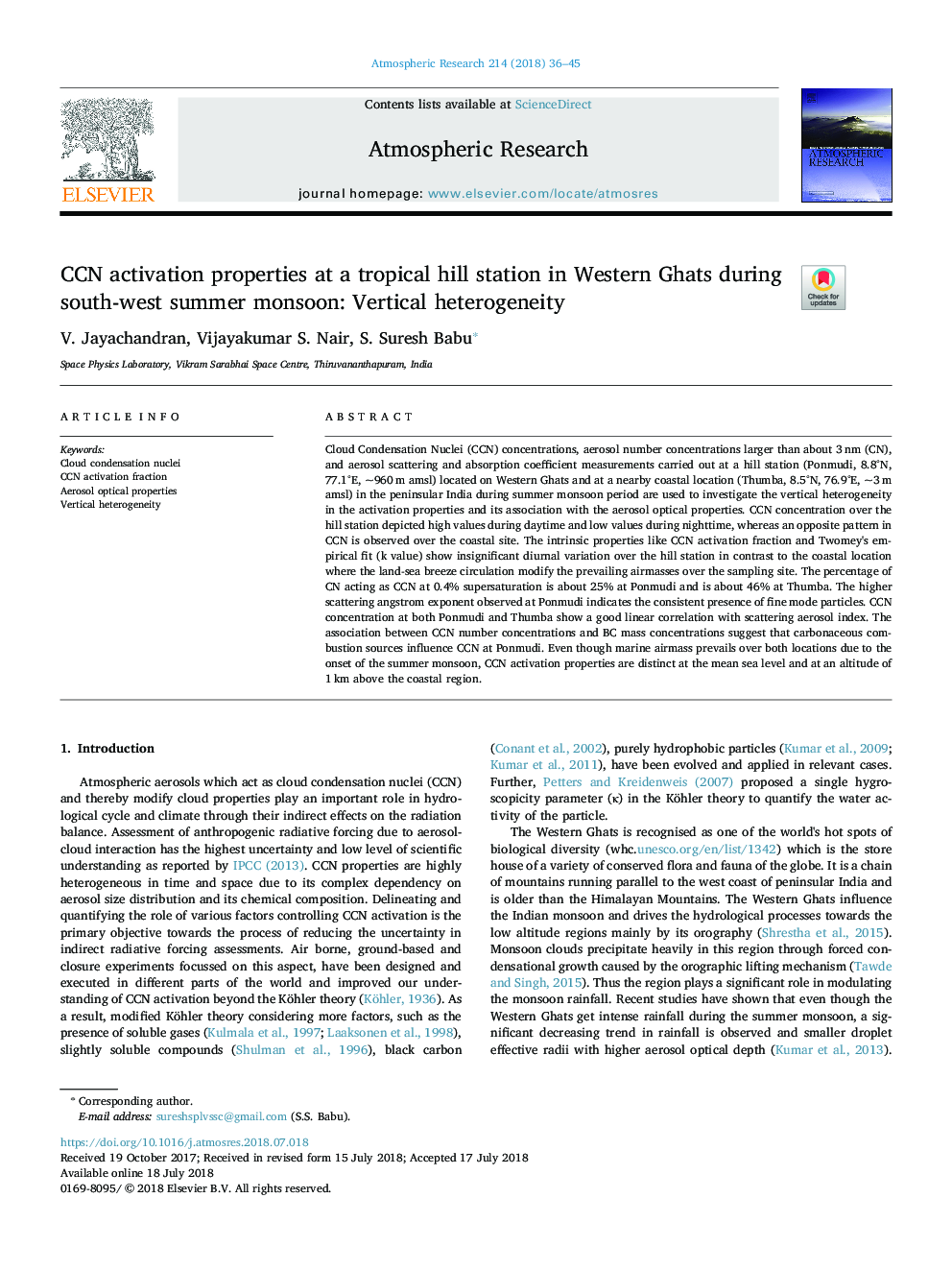| Article ID | Journal | Published Year | Pages | File Type |
|---|---|---|---|---|
| 8864435 | Atmospheric Research | 2018 | 10 Pages |
Abstract
Cloud Condensation Nuclei (CCN) concentrations, aerosol number concentrations larger than about 3â¯nm (CN), and aerosol scattering and absorption coefficient measurements carried out at a hill station (Ponmudi, 8.8°N, 77.1°E, ~960â¯m amsl) located on Western Ghats and at a nearby coastal location (Thumba, 8.5°N, 76.9°E, ~3â¯m amsl) in the peninsular India during summer monsoon period are used to investigate the vertical heterogeneity in the activation properties and its association with the aerosol optical properties. CCN concentration over the hill station depicted high values during daytime and low values during nighttime, whereas an opposite pattern in CCN is observed over the coastal site. The intrinsic properties like CCN activation fraction and Twomey's empirical fit (k value) show insignificant diurnal variation over the hill station in contrast to the coastal location where the land-sea breeze circulation modify the prevailing airmasses over the sampling site. The percentage of CN acting as CCN at 0.4% supersaturation is about 25% at Ponmudi and is about 46% at Thumba. The higher scattering angstrom exponent observed at Ponmudi indicates the consistent presence of fine mode particles. CCN concentration at both Ponmudi and Thumba show a good linear correlation with scattering aerosol index. The association between CCN number concentrations and BC mass concentrations suggest that carbonaceous combustion sources influence CCN at Ponmudi. Even though marine airmass prevails over both locations due to the onset of the summer monsoon, CCN activation properties are distinct at the mean sea level and at an altitude of 1â¯km above the coastal region.
Related Topics
Physical Sciences and Engineering
Earth and Planetary Sciences
Atmospheric Science
Authors
V. Jayachandran, Vijayakumar S. Nair, S. Suresh Babu,
